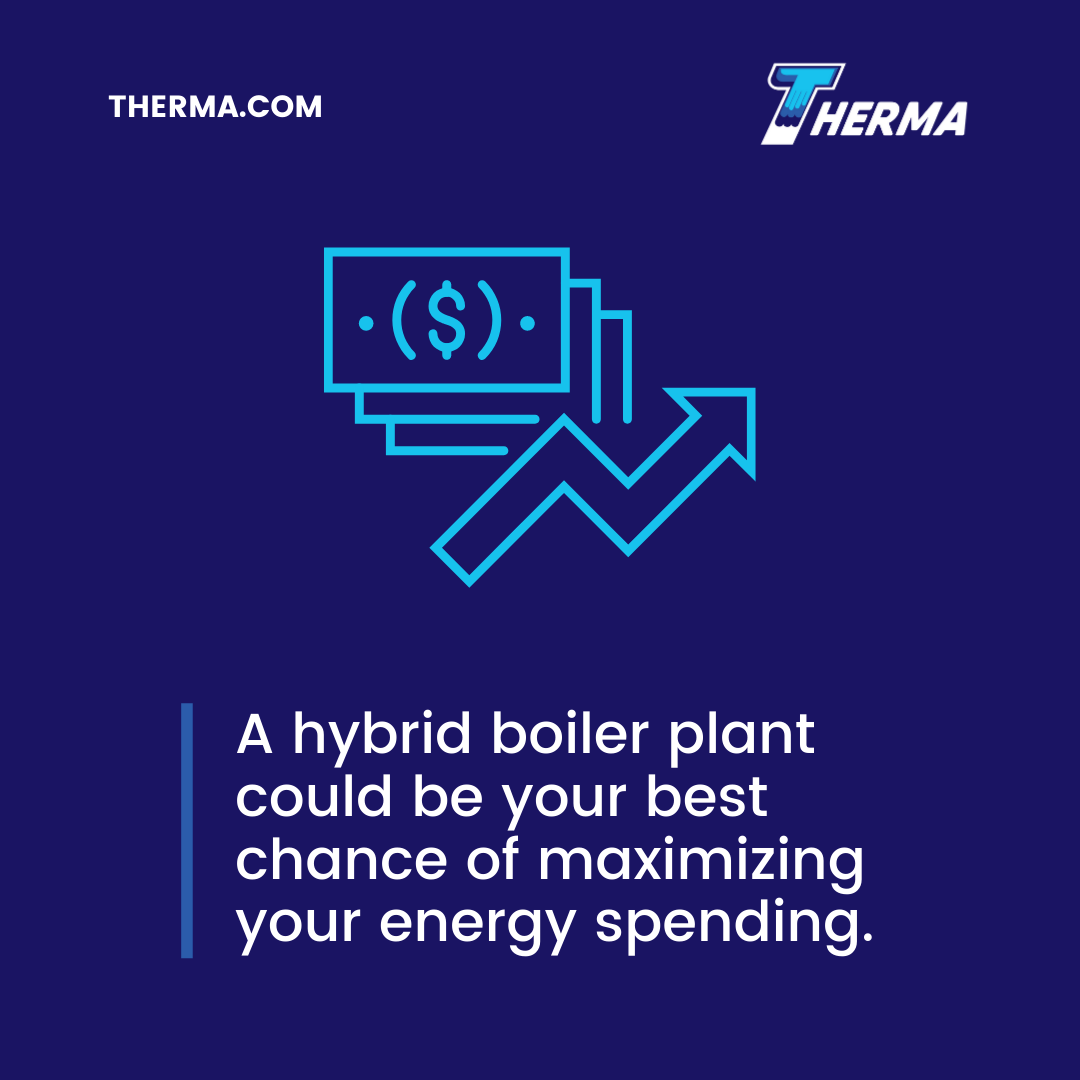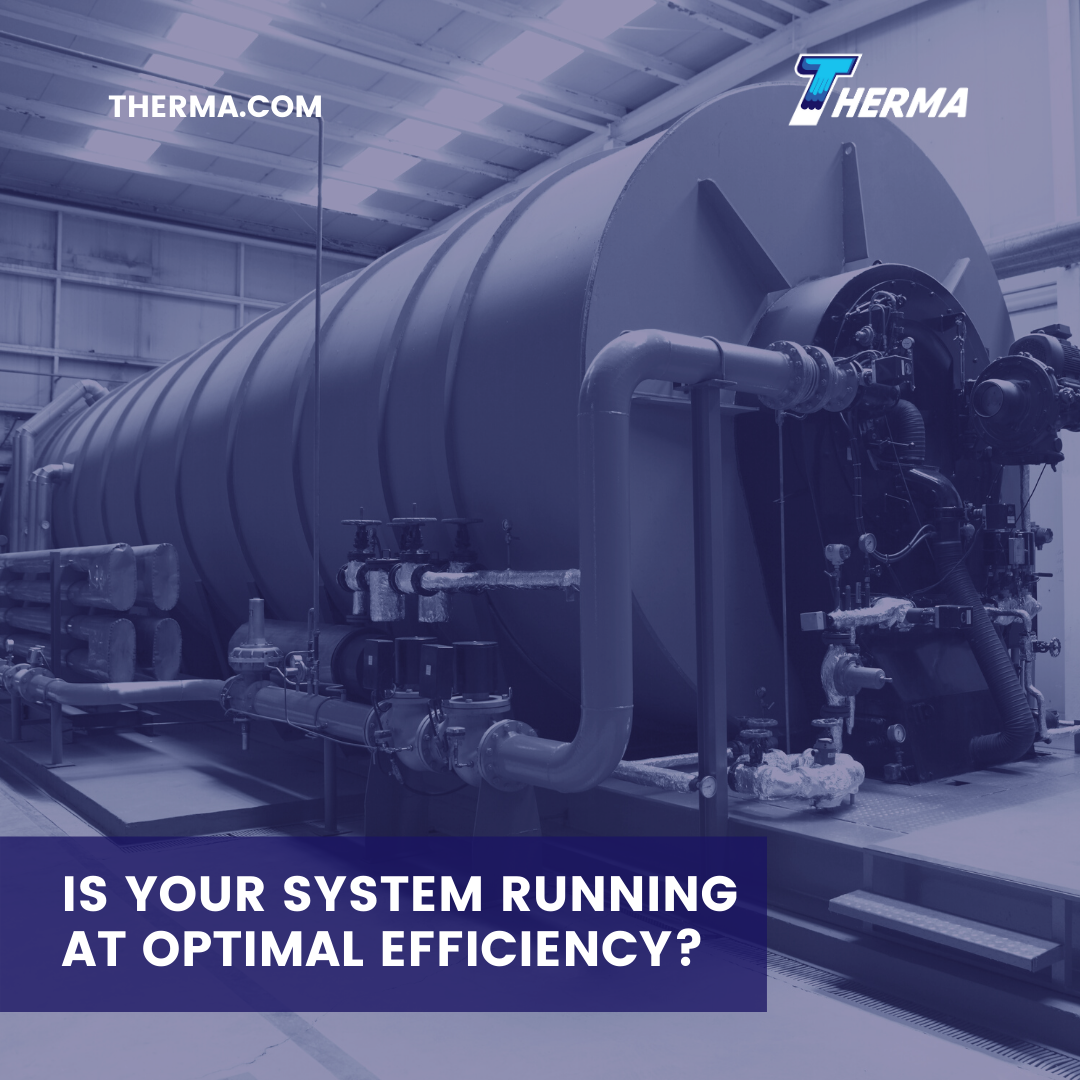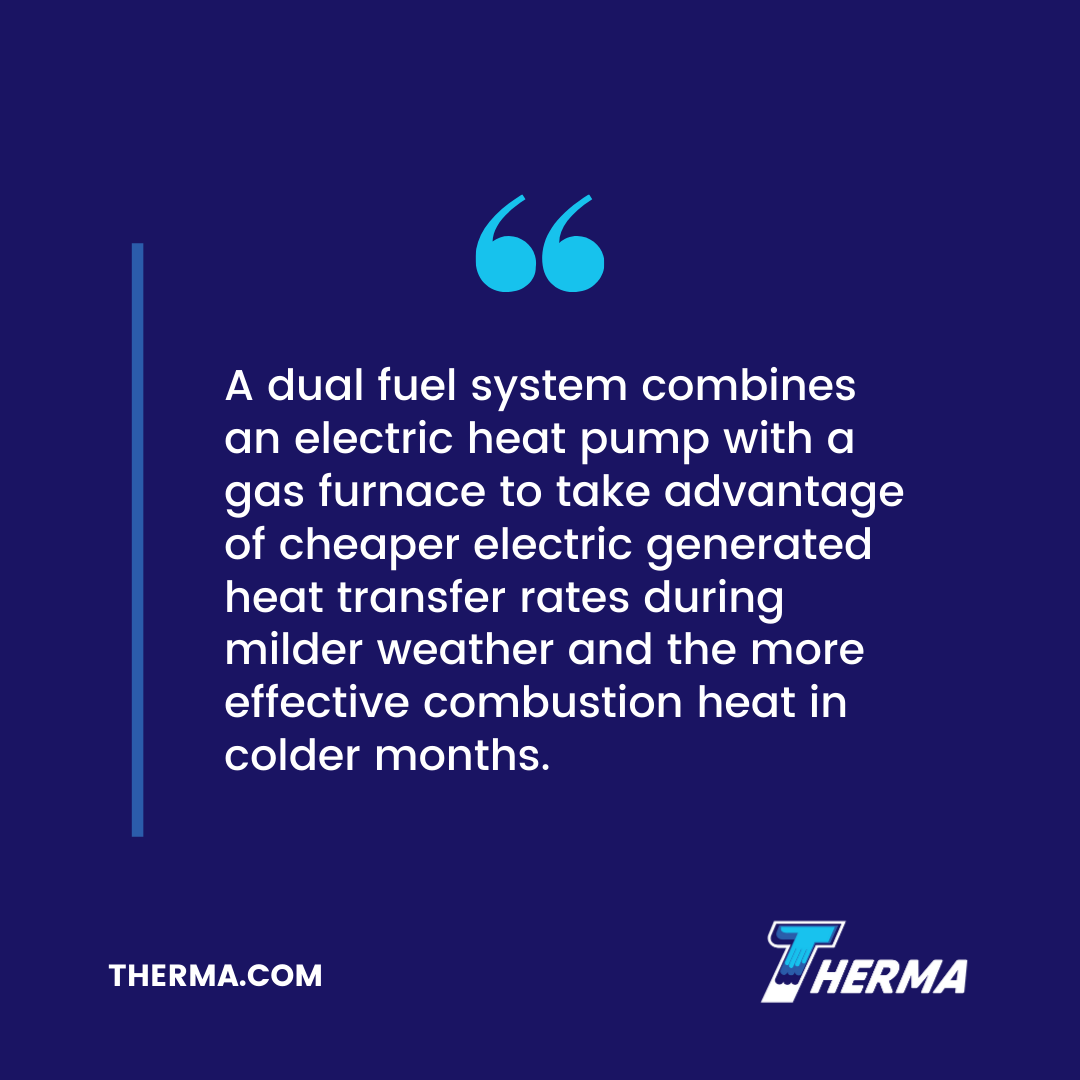Hybrid boiler plants, what can you learn? Now, let’s ask this, Is your HVAC system running at optimal efficiency for both air conditioning and heating? Cooling is typically the first place building owners look to cut costs when it comes to HVAC, but streamlining heating can improve efficiency and boost cost savings.
One of the best places to improve heating efficiency is the boiler. A hybrid HVAC system allows you to use multiple forms to optimize heating efficiency throughout the heating season. A hybrid boiler plant could be your best chance of maximizing your energy spending in regions where the weather can be changeable.
Traditional Heating Systems
There are three primary types of heating systems: combustion furnaces, heat pumps and boilers.
Combustion Furnace
A combustion furnace heats a building through the combustion or ignition and burning of fuel utilizing fan ventilation to circulate the heated air. The fuel source (typically natural gas or oil, although you can burn solid fuels) burns in a combustion chamber. Then, fans force the heated air through ductwork into different zones of the building.
Pros and Cons
The main advantage of a combustion furnace is that it will provide heat regardless of outdoor temperature, producing heat through the combustion process. Another advantage is the lifespan of the furnace. A properly cared for combustion furnace can last 20-30 years.
The main disadvantage of a combustion furnace is the ongoing cost of fuel. Depending on your region, you may have limited options when it comes to fuel choice, making the annual expense significant
Heat Pump
A heat pump heats a building by extracting heat from the outside air and transferring it into the building. The heat pump uses electricity as a power source. Adding an electric heat strip can supplement heat if outdoor temperatures are too cold for the heat pump to operate normally.
Pros and Cons
A key advantage of using a heat pump is its energy efficiency. Even though the electricity cost is typically higher than combustion fuels, heat pumps use a significantly smaller amount, making them an excellent energy-saving choice.
The inability to work in subzero temperatures is a heat pump’s chief disadvantage. The lifespan of a heat pump is also only about half that of a furnace.
Dual-Fuel System
A dual fuel system combines an electric heat pump with a gas furnace to take advantage of cheaper electric generated heat transfer rates during milder weather and the more effective combustion heat in colder months.
Boiler
A boiler uses heated water or steam circulated through pipes connected to radiators throughout a facility to heat the building. Boilers can use electricity, natural gas, or solid combustion fuels. There are two types of boilers: mass non-condensing boilers and high-efficiency condensing boilers.
- Non-condensing boilers work most efficiently in the coldest months of the year, returning water with temperatures around 130 degrees F with 80-85% efficiency.
- Condensing boilers can reach a maximum efficiency of nearly 95% when the return water temperature is below the dew point in early spring and late fall.
Hybrid Boiler
Hybrid boilers allow users to make the most of multiple types of heating options for optimal performance and energy efficiency. A hybrid boiler can utilize the condensing boiler on milder days and the non-condensing boiler when temperatures drop lower, providing enhanced comfort and maximizing energy usage.
Tracking and monitoring combustion systems and fuel prices can help you optimize efficiency and lower costs. Radiators require regular maintenance and inspections, paying particular attention to potential leaks. Boilers will also benefit from routine maintenance to ensure optimal operation and safety.
In northern latitudes, some building owners and operators sync maintenance schedules and seasonal shifts, shifting from the high efficiency condensing boiler at the end of summer to the more robust, more effective mass non-condensing boiler.
Overall, the energy-saving benefits of a hybrid boiler plant can be well worth the initial capital expenditure of installing the dual system.
 Annual Fuel-Utilization-Efficiency (AFUE) Rating
Annual Fuel-Utilization-Efficiency (AFUE) Rating
The AFUE rating is a measurement used to identify fuel to energy conversion in a gas furnace. If the furnace you are using has a 75 percent AFUE rating, it’s converting three-quarters of all the energy it’s consuming into actual heat. The furnace is using the remaining one-quarter throughout the heating process.
The higher your furnace’s AFUE rating, the greater your furnace’s energy efficiency is. The current AFUE minimum standard rating (for new furnaces) is 78 percent. High-efficiency, energy-saving units will boast a rating between 90 and 97 percent. For units that are mid-range efficient, expect AFUE ratings between 80 and 85 percent.
If you’re wondering whether a hybrid boiler plant is right for your project, get in touch with Therma’s HVAC experts.









